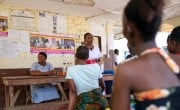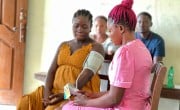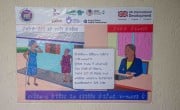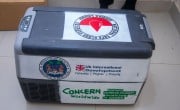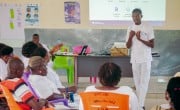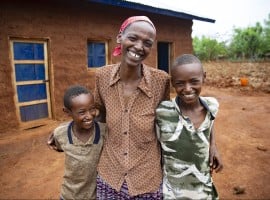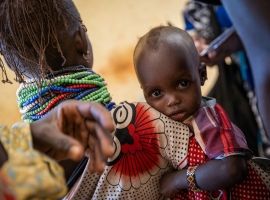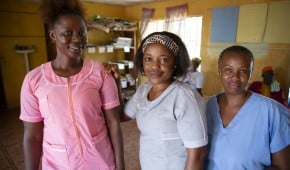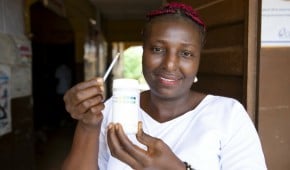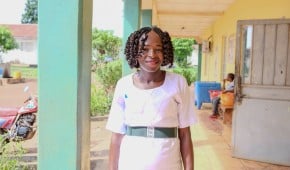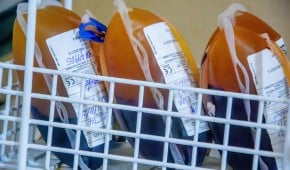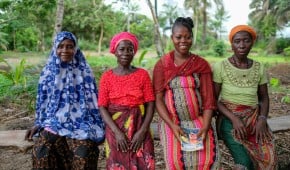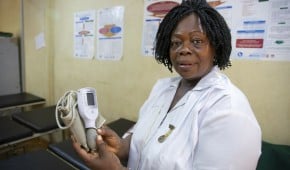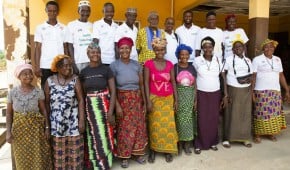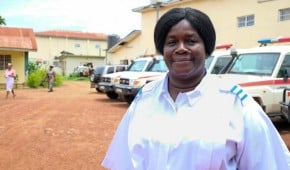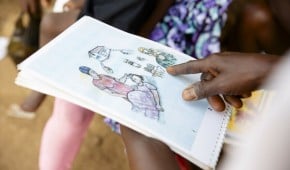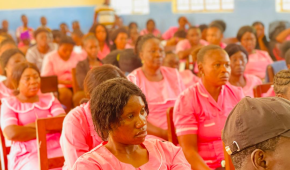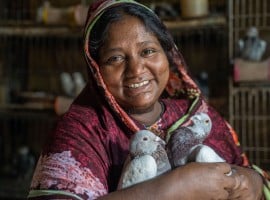
Read our 2024 annual report
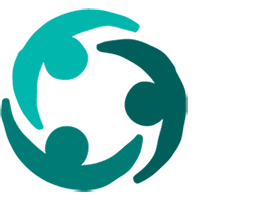
Knowledge Hub
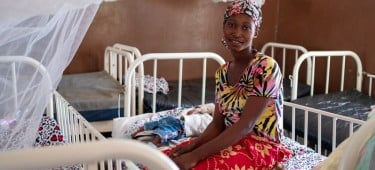
Saving Lives in Sierra Leone (SLiSL) III Consortium Programme
The Saving Lives in Sierra Leone (SLiSL) III Consortium is a 5-year (2023-2028) £15 million GBP health-systems strengthening programme funded by Foreign, Commonwealth and Development Office (FCDO).
The programme is being implemented in 6 districts: Bombali, Kambia, Kenema, Kono, Moyamba and Western Area Urban, reaching an estimated 937,000 women (15-49 years); 739,600 adolescent girls (10-19 years); and 552,284 children under 5-years of age.
The programme is led by Concern Worldwide in collaboration with a consortium of partners comprising of 5 humanitarian NGO’s: Helen Keller International; Humanity & Inclusion; Kings Global Health Partnerships; Welbodi Partnership and Send Sierra Leone.
Collectively, members bring over 130 years of combined experience in Sierra Leone, working in partnership with the Ministry of Health to deliver impactful programmes that contribute to national strategy achievement and progress towards the Sustainable Development Goals.
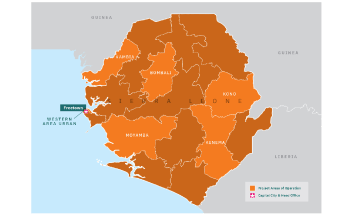
Background
Sierra Leone has seen sharp declines in maternal mortality, from 1,682 per 100,000 live births in 2000 to 354 in 2023, a 79% reduction, but it remains well above its goal of under 300 by end 2025 (UNFPA). Skilled birth attendance exceeds 90%, and over 85% of the population lives within 5 km of a health facility, yet gaps in quality of care and referral systems persist.
In recent years, the Ministry of Health and Sanitation (MOH) has worked to strengthen pregnancy monitoring, through trainings and policy reviews such as the Nurse & Midwifery Strategy (2025-2030) which aims to grow midwifery and obstetric surgical capacity. Despite this, the country’s health workforce remains overstretched, unevenly distributed, and limited in critical skills. Some districts faced severe shortages of medical officers and surgical staff, impacting patient care, emergency responses, and referral systems. Additionally, the persistent lack of essential equipment in health facilities undermines quality health service delivery.
Adolescent health remains a high concern; roughly 30% of girls become pregnant before age 18. Teenage pregnancy rates, early marriage, and unsafe abortions, which account for around 10% of maternal deaths are persistent drivers of adolescent mortality and morbidity. Although adolescent‐friendly services are expanding regionally, comprehensive adolescent needs; mental health, nutrition, schooling, safe abortion access, remain under resourced, with weak coordination and insufficient financing.
- Between 2017–2018, SLiSL‑1 (Saving Lives in Sierra Leone Phase 1), implemented through FCDO and the UNFPA-led consortium, focused on strengthening the health workforce management system. A major achievement was the launch of the HRHSL digital platform for real‑time monitoring of health worker attendance and payroll. This effort enabled the MOH to identify and remove 'ghost' workers, saving and freeing up resources for service delivery.
- SLiSL‑2, which ran from 2018 to 2023, aimed to reduce maternal, neonatal, child and adolescent mortality by 25 %, by improving access to free health care, family planning, nutrition, emergency referrals, service quality, and disease surveillance. The programme increased RMNCAH service utilization, expanded adolescent sexual and reproductive health access, and strengthened health systems and emergency preparedness.
Notwithstanding these achievements, key priorities for the MOH include closing quality‐of‐care gaps, scaling adolescent‐specific services, ensuring availability of contraception, continuing community engagement, strengthening data systems, and sustaining policy implementation.
On this basis, SLiSL-3 was conceptualised as a whole-of-system approach focused on district level implementation to strengthen the health system and improve the quality of health service delivery.
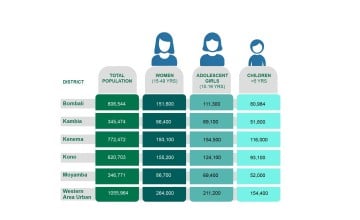
I was 37 weeks pregnant when I was tested positive for pro-eclampsia after my urinalysis at Bauya Community Health Centre. The nurses used their CRADLE device to monitor my blood pressure and heart rate before I suddenly went into labour. I am so grateful for the swift intervention of the staff. Thank you for saving my life and my baby's life.
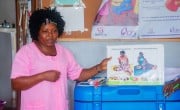
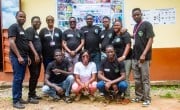
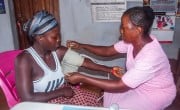
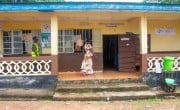
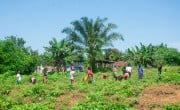
Programme Areas
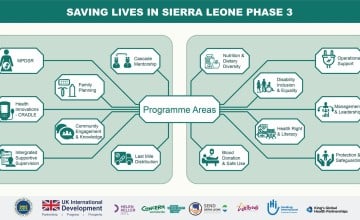
Expected Outcomes
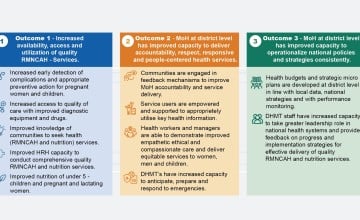
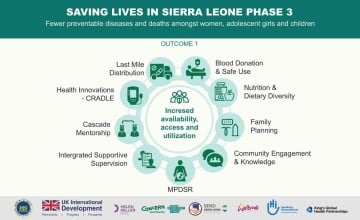
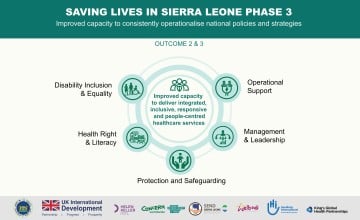
Integrated Health System Strengthening
Whole System Approach
The approach at the district level focuses on empowering District Health Management Teams (DHMTs) to effectively oversee and support health facilities. This approach integrates planning, financing, data systems, workforce management, and community engagement to ensure coordinated and responsive service delivery. It focuses on 4 main areas of intervention:
- District Support led by Concern, Helen Keller International and SEND.
- Community Level Interventions led by Concern, Helen Keller International and SEND.
- Health Workforce Development Accountability led by Concern, Helen Keller International and SEND.
- Clinical Services led by technical specialist partners Humanity & Inclusion, Kings Global Health Partnerships and Welbodi Partnership.
Strengthening DHMT operations is crucial, as they are the frontline managers of public health.
Through capacity building, supportive supervision, and decentralized decision-making, DHMTs are better equipped to monitor facility performance, address challenges, and implement quality improvement measures. This localized approach enhances accountability, improves resource allocation, and fosters stronger links between health facilities and communities.
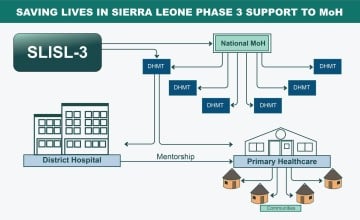
Programme Impact: Outcome 1 Results
Last Mile Distribution (LMD)
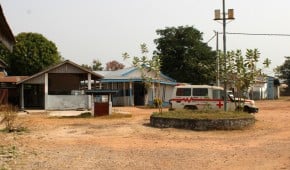
SLiSL-3 supports the National Medical Supplies Agency (NMSA) to conduct LMD for Free Health Care commodities in the 6 supported districts.
LMD refers to the final step in the supply chain, delivering health commodities such as medicines, vaccines, or equipment from central storage to remote health facilities or communities. It is crucial because timely, reliable delivery ensures consistent access to essential supplies, directly impacting service quality and patient health outcomes.
Between January-March 2025, SLiSL-3 supported LMD through national 3rd party logistics providers. By April 2025, SLiSL-3 worked with the NMSA to support a district-led LMD where the DHMTs planned, implemented and completed LMD to all their facilities in the supported districts. Additionally, SLiSL-3 supported last mile quality assurance through real time and post distribution monitoring.
The implementation of a district-led LMD model for Free Health Care commodities has resulted in significant cost savings, while maintaining both efficiency and effectiveness in service delivery. There has also been a substantial improvement in cost-efficiency, without any compromise in the timeliness, reach, or quality of commodity delivery to health facilities.

Integrated Supportive Supervision (ISS)
Maternal Perinatal Death Surveillance Response (MPDSR)
Cascade Mentorship
Blood Donation and Safe Use
Family Planning
Nutrition and Dietary Diversity
Health Innovations
Community Engagement
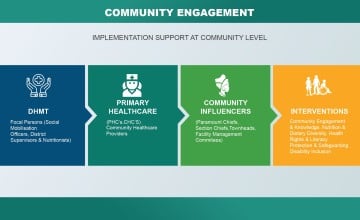
The last mile distribution has reduced stock-outs, especially in terms of essential medicines for pregnant women and children.
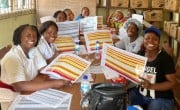
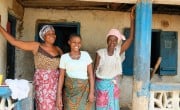

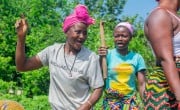

Programme Impact: Outcome 2 Results
Equality and Inclusion
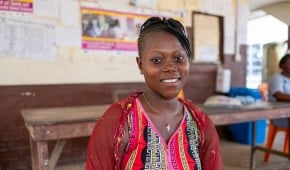
Gaps in equality and inclusion in Sierra Leone’s health service delivery include limited access for persons with disabilities, gender disparities, and socio-economic barriers that marginalize vulnerable populations. Deliberately planning and implementing inclusive health programmes is essential to ensure no one is left behind.
SLiSL-3 prioritizes the needs of persons with disabilities to enhance equity, uphold human rights, and improve overall health outcomes. Inclusive health systems not only serve diverse communities better but also contribute to sustainable development and the achievement of universal health coverage.
SLiSL-3 works with Organizations of Persons with Disabilities, Facility Management Committees and civil society groups to advocate for disability-friendly practices at facility and community levels. The programme has so far trained 509 health care workers and disseminated 2,673 IEC materials on inclusive family planning, sexual reproductive health rights and disability-friendly services.

Health Rights and Literacy
Data Use and Management
Protection
Working with Matron at Kambia Government Hospital is key in supporting health system structures here in Kambia. I have learnt a great deal from her so far and continue to learn from the wider hospital staff. We are working with multiple stakeholders across the hospital, DHMT and NGOs to collaboratively improve system processes in a fragile and complex health system.
Programme Impact: Outcome 3 Results
Operational support

This includes logistics support, transport, data management tools, supervision capacity, infrastructure maintenance, and financial resources to the DHMTs, enabling them to plan better, monitor service delivery, respond to emergencies, and ensure consistent supplies and staffing across health facilities. This directly contributes to improved coordination, accountability, and decision-making at the district level, ultimately enhancing the delivery of quality health care.
SLiSL-3 is playing a vital role in addressing critical gaps in maintenance and fuel supply to utility vehicles, ambulances and generators to power health offices and health facilities, thereby ensuring that emergency and routine services remain functional. Additionally, SLiSL-3 supports communication and power supply payments to the Electricity Distribution and Supply Authority (EDSA).

Leadership and Management
Our communities now have more confidence in coming to the health facility because they know medicines and services are available.
